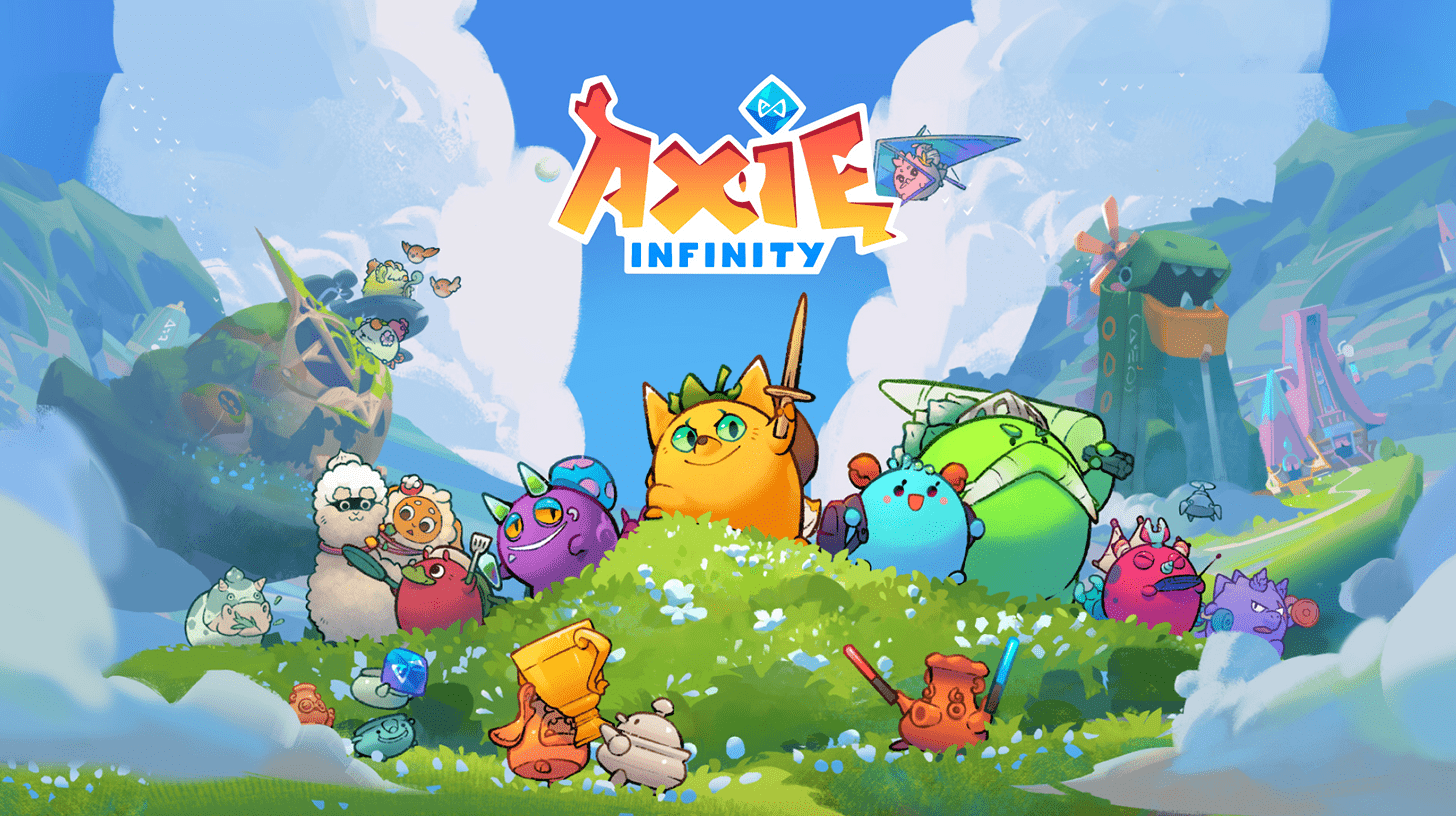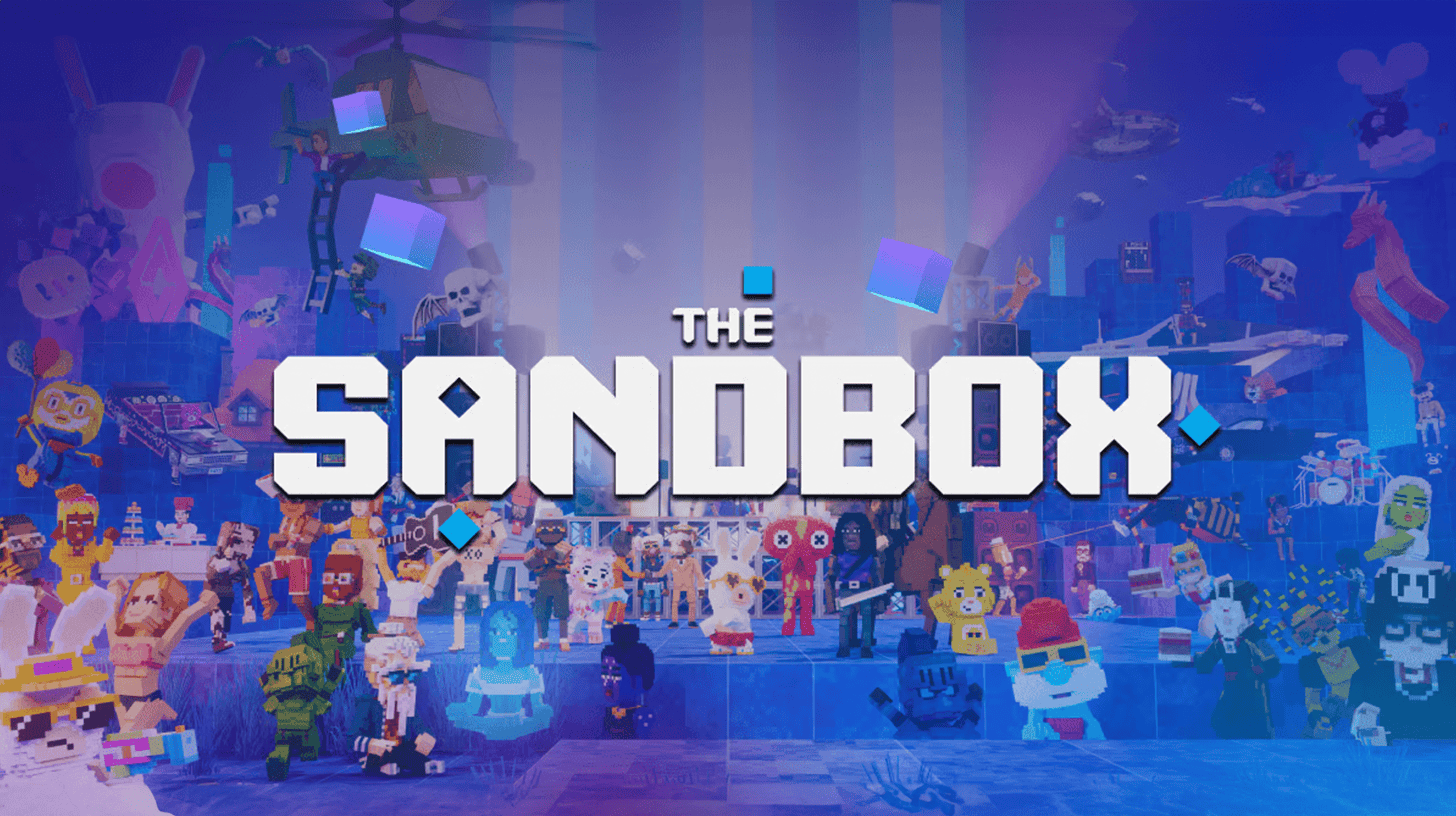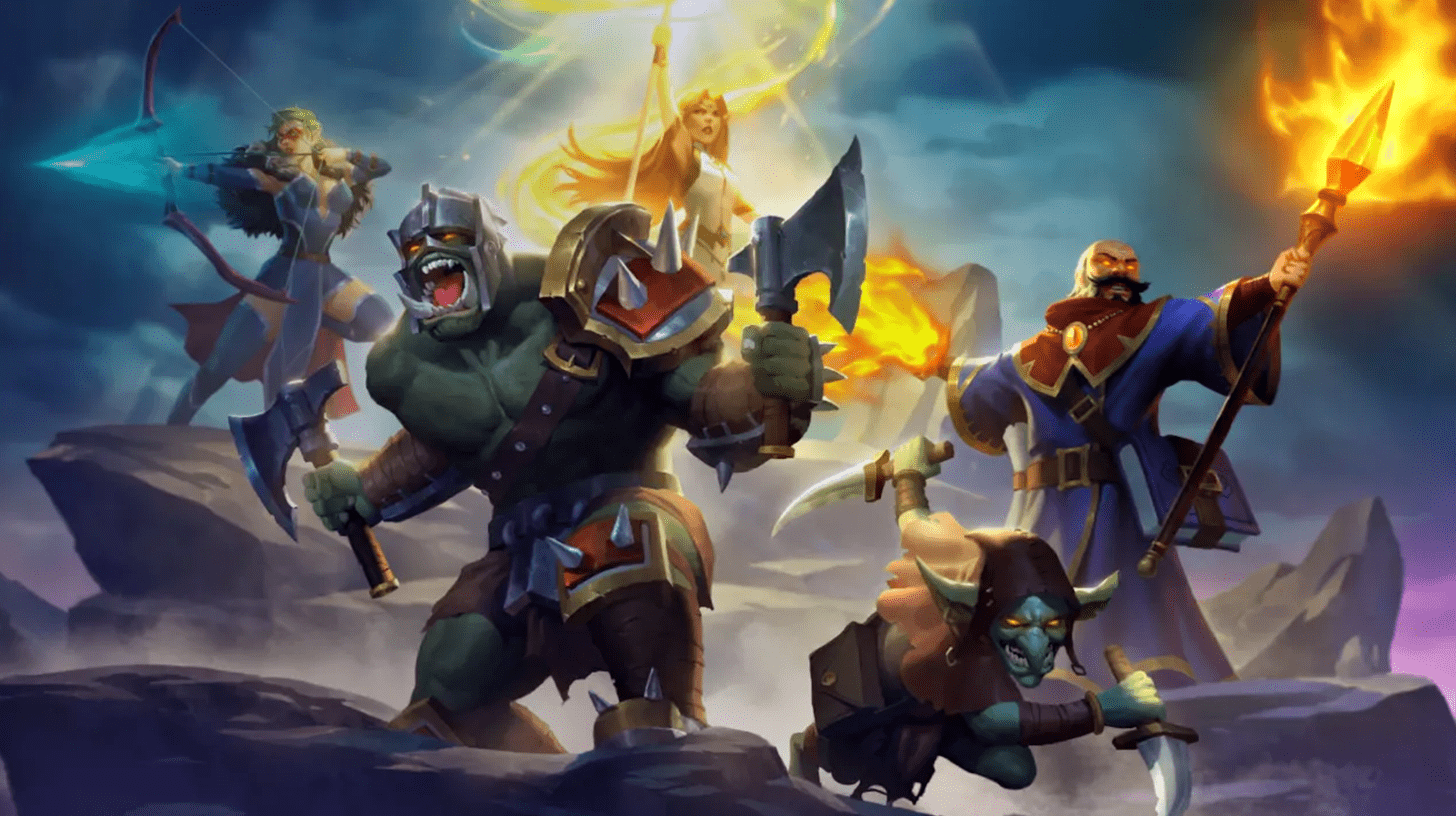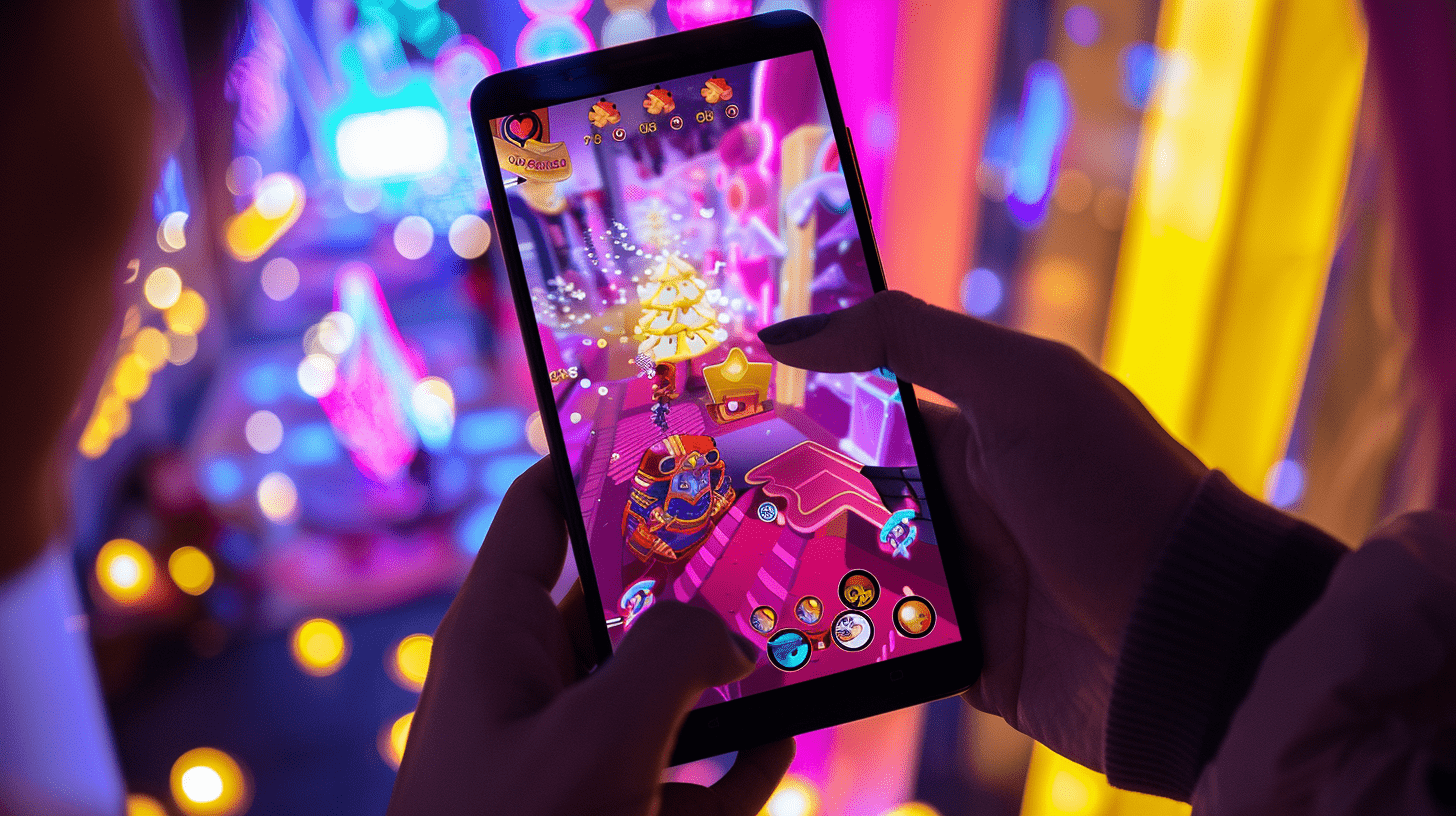The Rise of Collaborative Gaming: How Crypto is Enhancing Multiplayer Experiences

Collaborative gaming has seen a significant rise in popularity, with players increasingly drawn to experiences that emphasize teamwork, strategy, and social interaction. These games, which require players to work together to achieve common goals, have become a cornerstone of the gaming industry, offering more immersive and engaging experiences than traditional single-player games.
As the gaming landscape evolves, blockchain and cryptocurrency are emerging as key technologies enhancing these multiplayer experiences. By integrating crypto elements, such as decentralized platforms, token-based rewards, and player-driven governance, blockchain is transforming how players interact, collaborate, and compete within virtual worlds.

The Core of Collaborative Gaming
Collaborative gaming refers to multiplayer games where players must work together to achieve common objectives, often requiring a high level of teamwork, strategy, and communication. Unlike competitive games where players compete against one another, collaborative games emphasize cooperation, making them an important aspect of the modern gaming landscape. These games foster a sense of community and shared purpose, which has contributed to their growing popularity among players of all ages.
Key Features of Successful Multiplayer Games
Teamwork
Successful collaborative games rely heavily on teamwork, where players must coordinate their actions, share resources, and support each other to overcome challenges. This collective effort is central to the gameplay experience, making each player's contribution crucial to the team's success.
Strategy
In addition to teamwork, strategic thinking is often required in collaborative games. Players must plan their moves, anticipate challenges, and adapt their strategies based on the evolving dynamics of the game. This strategic depth adds a layer of complexity that keeps players engaged and invested in the game.
Social Interaction
Social interaction is another key feature of collaborative gaming. These games provide platforms for players to communicate, form alliances, and build relationships. The social aspect of these games not only enhances the gaming experience but also fosters long-term player engagement and loyalty.
Traditional vs. Blockchain-Based Multiplayer Games: What’s Changing?
The introduction of blockchain technology into collaborative gaming is bringing significant changes to how these games are played and experienced.
Decentralization
Traditional multiplayer games are typically managed by centralized entities, such as game developers or publishers, who control the game’s rules, economies, and updates. In contrast, blockchain-based games operate on decentralized platforms, where game governance and decision-making are often distributed among players through decentralized autonomous organizations (DAOs). This shift gives players more control over the gaming environment and fosters a more democratic approach to game development.
Ownership and Rewards
In traditional games, players invest time and sometimes money into their characters and in-game assets, but they do not truly own these assets. Blockchain-based games introduce the concept of true ownership through non-fungible tokens (NFTs), allowing players to own, trade, and monetize their in-game assets. Additionally, blockchain games often integrate cryptocurrency rewards for collaborative achievements, providing tangible incentives for teamwork and cooperation.
Transparency and Security
Blockchain technology enhances the transparency and security of multiplayer games. All transactions and game mechanics are recorded on a public ledger, making it easier to verify fairness and preventing fraud. This transparency builds trust among players, further encouraging collaboration.
While the core elements of teamwork, strategy, and social interaction remain central to collaborative gaming, blockchain technology is introducing new dimensions of ownership, governance, and reward systems that are transforming the way these games are played and experienced.

The Role of Blockchain in Collaborative Gaming
Blockchain technology is playing a transformative role in collaborative gaming, offering innovative solutions that enhance security, transparency, and the overall multiplayer experience. By integrating blockchain, games are evolving to create more dynamic and trustworthy environments where players can interact and collaborate more effectively.
Secure and Transparent Multiplayer Interactions
Blockchain’s decentralized and immutable ledger provides a secure foundation for multiplayer interactions. Every action, transaction, and decision made within the game is recorded on the blockchain, ensuring that all interactions are transparent and tamper-proof. This security is crucial in collaborative gaming, where trust among players is essential. Blockchain technology mitigates risks such as cheating and fraud by providing a verifiable history of all in-game activities, which fosters a fair and balanced gaming environment.
The Impact of Decentralized Platforms on Player Collaboration and Coordination
Decentralized platforms are revolutionizing how players collaborate and coordinate in games. Unlike traditional gaming platforms controlled by a central authority, decentralized platforms distribute power among the players, often through mechanisms like decentralized autonomous organizations. These platforms enable players to participate in decision-making processes, vote on game updates, and even influence the development of the game itself. This player-driven governance model strengthens collaboration as players work together not just within the game, but also in shaping the game’s future.
Examples of How Blockchain Enhances In-Game Communication and Cooperation
Token-Based Incentives
Blockchain enables the creation of token-based incentive systems that reward players for effective collaboration. For instance, players who complete cooperative missions or assist other players may earn cryptocurrency or in-game tokens that hold real value. These incentives encourage teamwork and make cooperative gameplay more rewarding.
Smart Contracts for Fair Play
Smart contracts, which are self-executing contracts with the terms of the agreement directly written into code, ensure that all in-game agreements and collaborations are honored. Whether it’s splitting rewards after a successful mission or ensuring fair distribution of resources, smart contracts automate these processes, reducing conflicts and enhancing trust among players.
Ownership of Shared Assets
In blockchain-based games, players can co-own digital assets, such as guild halls, rare items, or virtual land. This shared ownership, facilitated by NFTs and blockchain technology, requires players to collaborate on managing, upgrading, or even selling these assets. Such cooperative endeavors deepen player interactions and create a more interconnected gaming community.
Blockchain technology is significantly enhancing collaborative gaming by introducing secure, transparent, and player-driven systems. These innovations are not only transforming how players interact within games but also redefining the nature of teamwork and cooperation in the digital gaming world.

Crypto Rewards and Incentives in Multiplayer Games
The integration of cryptocurrency and NFTs into multiplayer games has introduced new ways to incentivize collaboration and teamwork. By rewarding players with tangible, blockchain-based assets for their collective achievements, these games are enhancing player engagement and fostering a more collaborative gaming environment.
The Introduction of Token-Based Rewards for Collaborative Achievements
One of the most significant developments in multiplayer gaming is the use of token-based rewards for collaborative efforts. Unlike traditional games, where rewards might be limited to in-game items or points, blockchain-based games offer tokens that have real-world value. These tokens can be earned through various collaborative achievements, such as completing a challenging mission with a team, contributing to a guild’s success, or even participating in community events within the game.
These token-based rewards serve as powerful motivators for players to engage in teamwork and cooperation. Not only do they enhance the gaming experience by adding a layer of tangible rewards, but they also align players’ incentives with collaborative success, encouraging a more cooperative and supportive community.
How In-Game Cryptocurrency and NFTs Drive Player Engagement and Teamwork
Cryptocurrencies and NFTs have become central to driving player engagement in multiplayer games. Cryptocurrencies offer players the ability to earn, trade, and invest their in-game earnings in a broader digital economy, while NFTs provide unique, tradable digital assets that can represent anything from rare items to characters or pieces of virtual land.
These blockchain-based rewards enhance teamwork by giving players more reasons to collaborate. For example:
- Shared Goals
In many games, teams or guilds can earn cryptocurrency or valuable NFTs by working together to achieve specific objectives. This shared pursuit of valuable rewards naturally fosters teamwork and strategic planning.
- Player Investment
Players who earn cryptocurrency or own NFTs within a game are more likely to invest time and effort into the game. This deeper level of investment often leads to greater participation in collaborative activities, as players seek to maximize their returns.
- Ownership and Trading
The ability to own and trade NFTs within a game adds a layer of economic interaction that can drive collaboration. Players might work together to collect rare items, which can then be traded or sold within the game’s marketplace, further enhancing the social and economic dynamics of the game.
Case Studies of Games That Use Crypto Rewards to Promote Collaboration

Axie Infinity
In Axie Infinity, players can earn Smooth Love Potion (SLP) tokens by battling with their teams of Axies. These tokens can be used within the game or traded on exchanges. The game also features a scholarship program, where experienced players lend their Axies to new players in exchange for a share of the earnings, promoting collaboration and mentorship within the community.

The Sandbox
The Sandbox allows players to create, own, and monetize their gaming experiences using the platform’s native cryptocurrency, SAND. Collaborative projects, such as building large-scale virtual worlds or hosting events, are rewarded with SAND tokens, encouraging players to work together to create more complex and engaging content.

Guild of Guardians
This game emphasizes team-based gameplay, where players form guilds to complete challenges and earn rewards. The game uses in-game tokens and NFTs as rewards for successful collaboration, with players able to trade or sell these assets on the market. This system incentivizes players to join forces and strategize to achieve common goals.
The introduction of crypto rewards and NFTs in multiplayer games is transforming how players engage with one another. By providing real-world value for in-game achievements, these systems encourage collaboration, deepen player investment, and create more dynamic and rewarding multiplayer experiences.

Decentralized Autonomous Organizations in Gaming
Decentralized Autonomous Organizations are transforming the governance of multiplayer games by shifting control from centralized authorities to the players themselves. These blockchain-based organizations operate through smart contracts, allowing for decentralized, transparent, and automated decision-making processes within games.
Explanation of DAOs and Their Role in Multiplayer Game Governance
A DAO is an organization governed by rules encoded as smart contracts on a blockchain, rather than being managed by a central entity. In the context of multiplayer gaming, DAOs provide a framework for players to collectively make decisions about game development, rule changes, and the management of in-game economies. Unlike traditional gaming models, where developers and publishers have the final say, DAOs empower the community, giving players a direct role in shaping the game’s future.
The use of DAOs in gaming ensures that decisions reflect the desires and interests of the player base, creating a more democratic and inclusive gaming environment. This decentralized governance model fosters a sense of ownership among players, as they have a tangible impact on the game's direction and policies.
How DAOs Enable Player-Driven Decision-Making and Collaboration
DAOs facilitate player-driven decision-making by allowing all stakeholders — usually players who hold governance tokens — to vote on key issues. This can include decisions on game updates, the allocation of resources, the introduction of new features, or even the enforcement of community standards. The voting process is transparent and recorded on the blockchain, ensuring that all voices are heard and that the results are fair and tamper-proof.
By enabling collective decision-making, DAOs encourage collaboration among players. Since the success of a DAO depends on the active participation of its members, players are motivated to work together, share ideas, and build consensus on the best course of action for the game. This collaborative environment not only enhances the gaming experience but also strengthens the community, as players develop a shared sense of purpose and responsibility.
DAOs are revolutionizing the governance of multiplayer games by giving players a direct role in decision-making and fostering collaboration. By enabling decentralized control, these organizations create more inclusive, transparent, and player-driven gaming environments, where the community's collective voice shapes the future of the game.

Enhancing Social Interaction Through Crypto
The integration of cryptocurrency and blockchain technology into gaming is not only revolutionizing gameplay mechanics and economic models but also significantly enhancing social interaction among players. By enabling unique, tradable in-game assets and fostering the development of player communities, crypto is creating stronger, more interconnected gaming networks.
The Role of NFTs in Creating Unique, Tradable In-Game Assets That Foster Collaboration
Non-fungible tokens have become a cornerstone of the crypto gaming experience, offering players the ability to own unique, verifiable digital assets. Unlike traditional in-game items, NFTs can be bought, sold, and traded on decentralized marketplaces, providing real-world value to digital assets. This ability to trade NFTs has fostered new forms of collaboration among players.
For example, players might collaborate to acquire rare NFTs, form alliances to pool resources for high-value purchases, or trade assets to optimize their gameplay strategies. The scarcity and uniqueness of NFTs drive players to work together to achieve common goals, deepening social bonds within the game. Moreover, the pride of ownership associated with rare NFTs encourages players to showcase their collections, sparking social interaction and competition within the gaming community.
How Blockchain Technology Enhances Social Features Like Player Guilds, Alliances, and Communities
Blockchain technology facilitates the creation and management of player guilds, alliances, and communities in a decentralized and transparent manner. In traditional games, guilds and alliances are often limited by the central control of the game developers, who dictate the rules and manage the infrastructure. Blockchain, however, allows for a more player-driven approach.
Through the use of smart contracts, guilds and alliances can be governed by the players themselves. For example, a guild might use a DAO structure to allow members to vote on important decisions, such as accepting new members, managing resources, or strategizing for in-game events. This decentralized governance model empowers players and creates a more engaged and collaborative community.
Additionally, blockchain technology enhances the security and transparency of these social structures. Transactions within guilds — such as the distribution of rewards or the sale of shared assets — are recorded on the blockchain, ensuring fairness and accountability. This transparency builds trust among players, further strengthening the social fabric of the gaming community.
The Impact of Crypto on Building Stronger, More Connected Player Networks
Crypto and blockchain technology are creating stronger, more connected player networks by providing new ways for players to interact and collaborate. The decentralized nature of blockchain allows players from all over the world to connect without the need for a central authority, creating truly global gaming communities.
These networks are often centered around shared interests, such as participating in a specific game, collecting certain types of NFTs, or engaging in particular in-game activities. The use of crypto tokens and NFTs adds a layer of economic interaction to these networks, where players can trade, lend, or gift assets, deepening their connections and fostering a sense of mutual support.
Moreover, the transparency and security provided by blockchain technology ensure that these interactions are trustworthy, reducing the likelihood of fraud or exploitation. This trust is crucial for building long-lasting player relationships and communities that extend beyond the game itself.
The integration of crypto into gaming is significantly enhancing social interaction by creating new opportunities for collaboration, community building, and economic exchange. Through NFTs, blockchain-based governance, and decentralized networks, players are forming stronger, more connected communities that enrich the gaming experience and foster lasting relationships.

Challenges and Considerations
While the integration of blockchain and cryptocurrency into multiplayer games offers numerous benefits, it also presents several challenges and considerations that need to be addressed to ensure a fair and balanced gaming experience.
Technical Challenges in Implementing Blockchain for Multiplayer Games
Implementing blockchain technology in multiplayer games is not without its technical hurdles. One of the primary challenges is scalability. Blockchain networks, particularly those using proof-of-work consensus mechanisms, can struggle to handle the high volume of transactions typical in a multiplayer game environment. This can lead to latency issues, slow transaction times, and an overall suboptimal gaming experience.
Another technical challenge is interoperability. As different games often use different blockchain platforms or standards, ensuring that assets and tokens can be seamlessly transferred or used across multiple games can be difficult. This lack of interoperability can limit the potential for cross-game collaboration and hinder the broader adoption of blockchain technology in gaming.
Finally, the complexity of blockchain technology itself can be a barrier. Many players may find the process of setting up wallets, managing private keys, and understanding blockchain mechanics intimidating or confusing, which can reduce the accessibility of crypto-enhanced multiplayer games.
The Potential for Economic Disparities to Affect Player Collaboration
The introduction of cryptocurrencies and NFTs into multiplayer games can create economic disparities among players, which may affect collaboration and the overall balance of the game. Players with more financial resources can often afford to purchase better in-game assets or acquire more valuable NFTs, giving them a significant advantage over others.
This wealth disparity can lead to a situation where richer players dominate the game, making it difficult for less wealthy players to compete or collaborate on equal footing. Such economic imbalances can discourage new or casual players from participating and can undermine the spirit of teamwork and fair play that is central to collaborative gaming.
Addressing this issue requires careful game design to ensure that all players have opportunities to succeed, regardless of their financial investment. Mechanisms such as skill-based rewards, free-to-earn models, and balanced matchmaking can help mitigate the impact of economic disparities.
Ensuring Fairness and Balance in Crypto-Enhanced Collaborative Gaming Environments
Ensuring fairness and balance in crypto-enhanced gaming environments is crucial to maintaining player engagement and fostering a positive community. One of the key considerations is the equitable distribution of rewards. Game developers must design systems that reward collaboration and skill rather than simply financial investment. This can include implementing caps on certain types of purchases, creating opportunities for players to earn valuable items through gameplay rather than purchase, and designing balanced in-game economies.
Another consideration is the transparency and security of transactions. Since blockchain technology records all transactions on a public ledger, ensuring that these transactions are secure and tamper-proof is essential for maintaining trust among players. However, this transparency must be balanced with privacy concerns, as players may not want all their in-game actions and financial transactions to be publicly visible.
Fostering a collaborative environment requires effective communication and conflict resolution mechanisms. Blockchain-based governance structures, such as DAOs, can play a role in this by allowing players to vote on changes, resolve disputes, and participate in the decision-making process. These structures can help ensure that all players have a voice in how the game is managed, contributing to a fairer and more inclusive gaming environment.
While blockchain and cryptocurrency offer exciting opportunities for enhancing multiplayer games, they also present significant challenges that must be carefully managed. By addressing technical issues, mitigating economic disparities, and ensuring fairness, developers can create balanced, engaging, and collaborative gaming experiences that benefit all players.

The Future of Collaborative Gaming with Crypto
The integration of cryptocurrency and blockchain technology into collaborative gaming is set to revolutionize the way players interact, cooperate, and compete. As these technologies continue to evolve, they will likely drive significant innovations in multiplayer game design and reshape the landscape of social gaming.
Predictions for the Evolution of Collaborative Gaming in the Crypto Space
As blockchain technology matures, we can expect to see more sophisticated and integrated collaborative gaming experiences. Future multiplayer games will likely leverage advanced blockchain features, such as cross-chain compatibility, enabling players from different gaming ecosystems to interact and collaborate seamlessly. Additionally, we may see the rise of more complex decentralized autonomous organizations within games, allowing players to govern in-game worlds, economies, and communities in increasingly democratic and transparent ways.
Furthermore, the integration of decentralized finance into gaming could lead to the development of new collaborative economic models, where players can pool resources, invest collectively in in-game assets, and share profits. This could transform the way players think about cooperation and competition, blurring the lines between gaming and real-world finance.
Potential Innovations in Multiplayer Game Design Driven by Blockchain Technology
Blockchain technology is likely to drive several key innovations in multiplayer game design. One such innovation is the concept of true digital ownership, where players have complete control over their in-game assets and can trade, sell, or lend them across different games and platforms. This will encourage deeper collaboration, as players work together to acquire, enhance, and leverage these assets for mutual benefit.
Another potential innovation is the use of smart contracts to automate and enforce agreements between players. For example, players could create smart contracts that automatically distribute rewards based on pre-agreed terms, ensuring fairness and reducing the potential for disputes. This could lead to more complex and strategic forms of collaboration, as players can rely on automated systems to manage their shared endeavors.
We may also see the development of new types of multiplayer games that are specifically designed around blockchain’s unique capabilities. These games could feature decentralized narratives, where the story evolves based on the collective decisions of the player community, or collaborative puzzles that require players to pool their knowledge and resources to unlock new game areas or rewards.
The Long-Term Impact of Crypto on Player Collaboration and Social Gaming
The long-term impact of crypto on collaborative gaming is likely to be profound, fundamentally altering the dynamics of player interaction and social gaming. As blockchain technology becomes more embedded in the gaming industry, we can expect to see a shift towards more player-driven ecosystems, where the community plays a central role in shaping the game’s development, economy, and governance.
This shift will likely lead to stronger, more connected player communities, as the incentives for collaboration and collective success become more pronounced. Players will be encouraged to form long-lasting alliances, participate in governance, and contribute to the growth of their gaming worlds, all while benefiting from the economic opportunities presented by crypto.
Additionally, the integration of crypto into gaming could lead to new forms of social interaction, where players engage not only as competitors or allies but also as co-investors, co-creators, and co-governors of their virtual environments. This could foster a deeper sense of community and belonging, as players work together to achieve common goals and share in the rewards of their collective efforts.
The future of collaborative gaming with crypto is filled with exciting possibilities. As blockchain technology continues to evolve, it will drive innovation in game design, enhance player collaboration, and create new opportunities for social interaction. The long-term impact of these developments will be a more dynamic, inclusive, and player-driven gaming landscape that blurs the lines between gaming, finance, and community-building.

Conclusion
The integration of cryptocurrency and blockchain technology is set to redefine collaborative gaming, offering players unprecedented opportunities for ownership, governance, and economic participation. By leveraging these technologies, multiplayer games can create more immersive, engaging, and socially connected experiences that go beyond traditional gaming dynamics.
The transformative potential of crypto in enhancing collaborative gaming experiences lies in its ability to empower players, foster community-driven innovation, and introduce new economic models that reward cooperation and creativity. As the gaming industry continues to evolve, developers and players alike are encouraged to explore the possibilities that crypto brings to multiplayer gaming. By embracing these innovations, the future of collaborative gaming promises to be more inclusive, dynamic, and rewarding than ever before.
